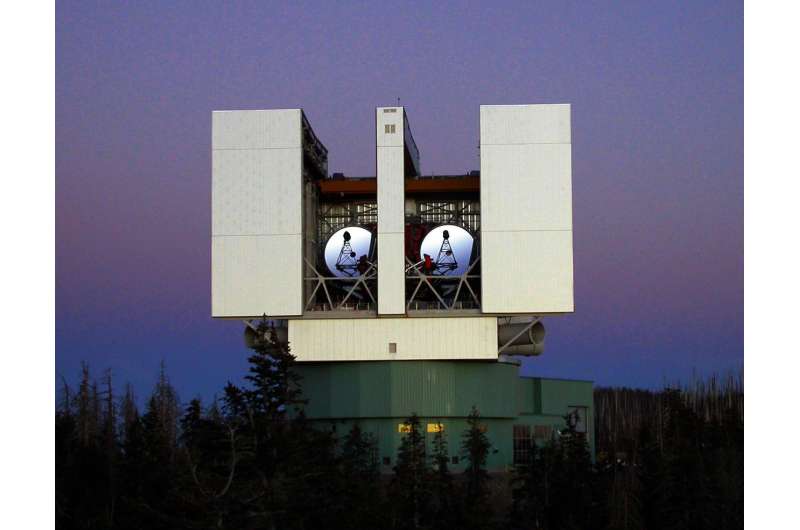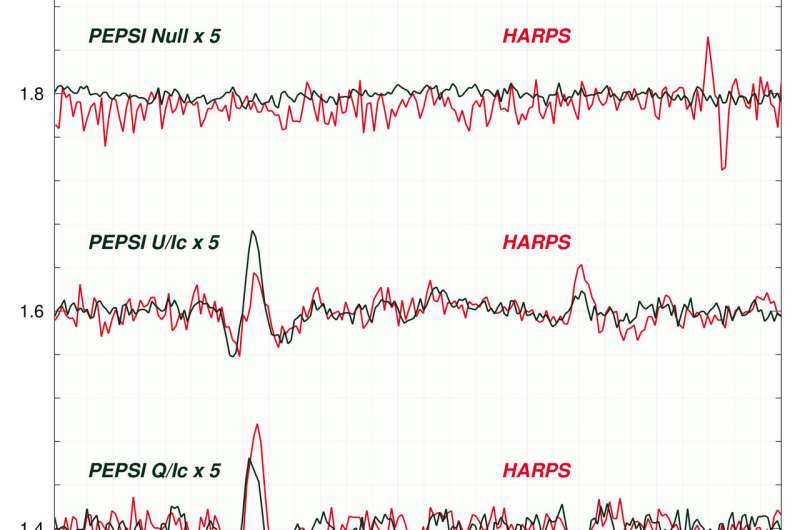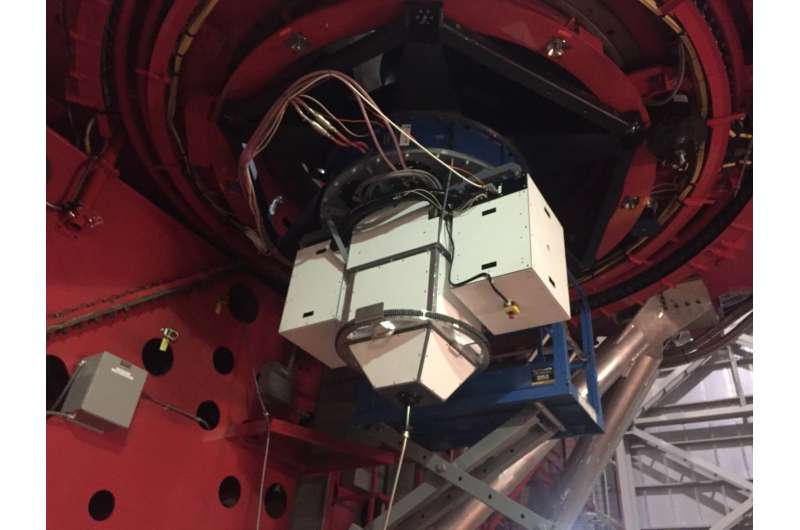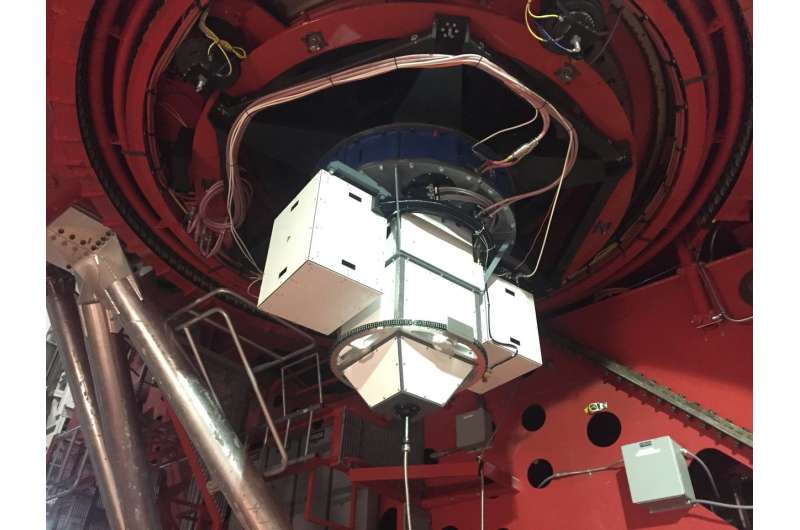The Large Binocular Telescope at Mt. Graham, Arizona. Credit: Large Binocular Telescope Observatory
Thanks to a cleverly designed "two-in-one" instrument attached to the world's most powerful telescope, astronomers can extract more clues about the properties of distant stars or exoplanets than previously possible.
Developed at the Leibniz-Institute for Astrophysics in Potsdam, Germany, the Potsdam Echelle Polarimetric and Spectroscopic Instrument (PEPSI) saw first light on April 1, 2015, after being successfully installed at the Large Binocular Telescope Observatory (LBTO) in Arizona, USA. Once both of PEPSI's polarimeters were mounted in the focus points of each of the LBT's two 8.4-meter mirrors in late September 2017, the telescope was pointed to the star gamma Equ and polarized light was received. From these spectra astronomers can, for example, deduce the geometry and strength of magnetic fields on the surfaces of distant stars, or study the reflected light from the atmospheres of potentially habitable exoplanets.
A polarimeter separates starlight according to its oscillation planes. It is complementary to a spectrograph that, like a prism, separates light according to its oscillation frequencies (or colour). The two combined, polarimeter and spectrograph, added to a powerful telescope, enable astronomers to obtain spectra in polarized light. This in turn allows the characterization of the full wave-front of the incoming stellar light and extract details of its radiation physics that otherwise remain hidden.
First polarimetric spectrum from PEPSI. The target is the bright magnetic star gamma Equ. The black line is the PEPSI spectrum and the red line is, for comparison, the HARPS-Pol spectrum. From top to bottom: the magnetic null spectrum enlarged by a factor five, the normalized linear Stokes component U/Ic enlarged by a factor 5, the normalized linear Stokes component Q/Ic enlarged by a factor 5, the normalized circular Stokes component V/Ic, and the normalized integral light I/Ic. Credit: Ilya Ilyin/AIP
A series of integrations in circularly and linearly polarized light was obtained when the telescope was pointed to the magnetic reference star Gamma Equulei, or gamma Equ, a double star located about 118 light-years from Earth. These spectra have a spectral resolution of R=120,000, that means they can resolve two wavelengths only five hundredths of a hydrogen atom's diameter apart. They cover two large wavelength regions in the visible light simultaneously, and have an unprecedented signal-to-noise ratio. Because the two polarimeters for each of LBT's "eyes" are identical and modular in design, circular and linear polarizations were obtained simultaneously.
The gamma Equ test also included a so-called null spectrum, which is obtained by swapping the observation sequence in the two fibers. Ideally, it would give zero polarization and be independent of wavelength. Any residual polarization would be due to instrumental effects.
"The null spectrum for PEPSI shows an extraordinary low degree of polarization noise caused by the instrument," says its principal investigator, Prof. Dr. Klaus Strassmeier, Research Branch Director at AIP and a professor of astronomy at the University of Potsdam. "Compared with the best spectropolarimeters currently available at other telescopes, it's probably better by a factor of ten." Eventually, the PEPSI polarimeters will enable stellar magnetic field measurements with extremely high precision," adds PEPSI's project scientist Dr. Ilya Ilyin.
polarimeter SX (left side) Credit: Klaus Strassmeier/AIP
For Dr. Christian Veillet, LBTO Director, "In the 8-10m class telescope select club, PEPSI was already a unique instrument, thanks to its resolution coupled to two 8.4-m mirrors simultaneously available. The addition of a polarimeter on each of LBT's eyes gives LBTO yet another unique capability. It comes as a precious complement to interferometry, which gives LBT's two eyes the imaging resolution of a 23-m telescope."
The PEPSI instrument is available to all LBT partners including the German astronomical community.
Polarameter DX (right side) Credit: Klaus Strassmeier/AIP
Provided by Leibniz Institute for Astrophysics Potsdam


























